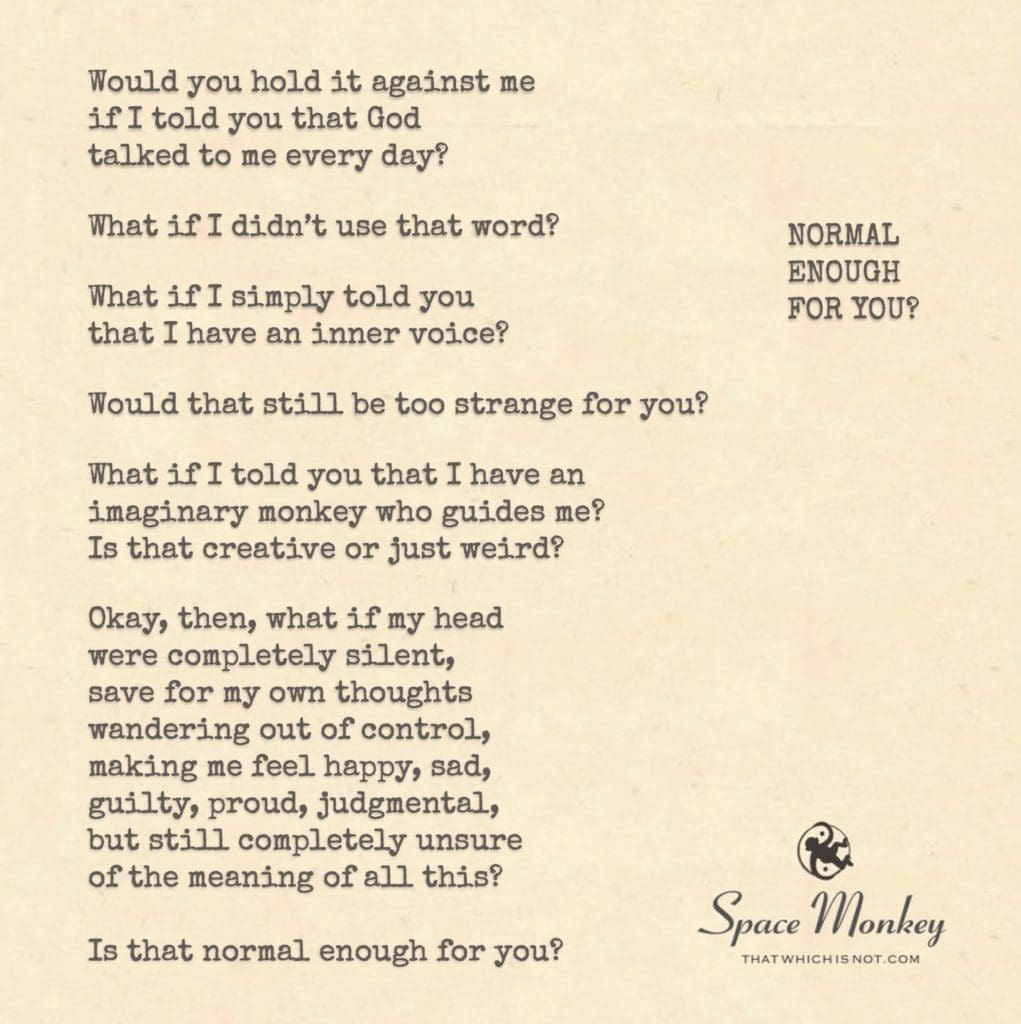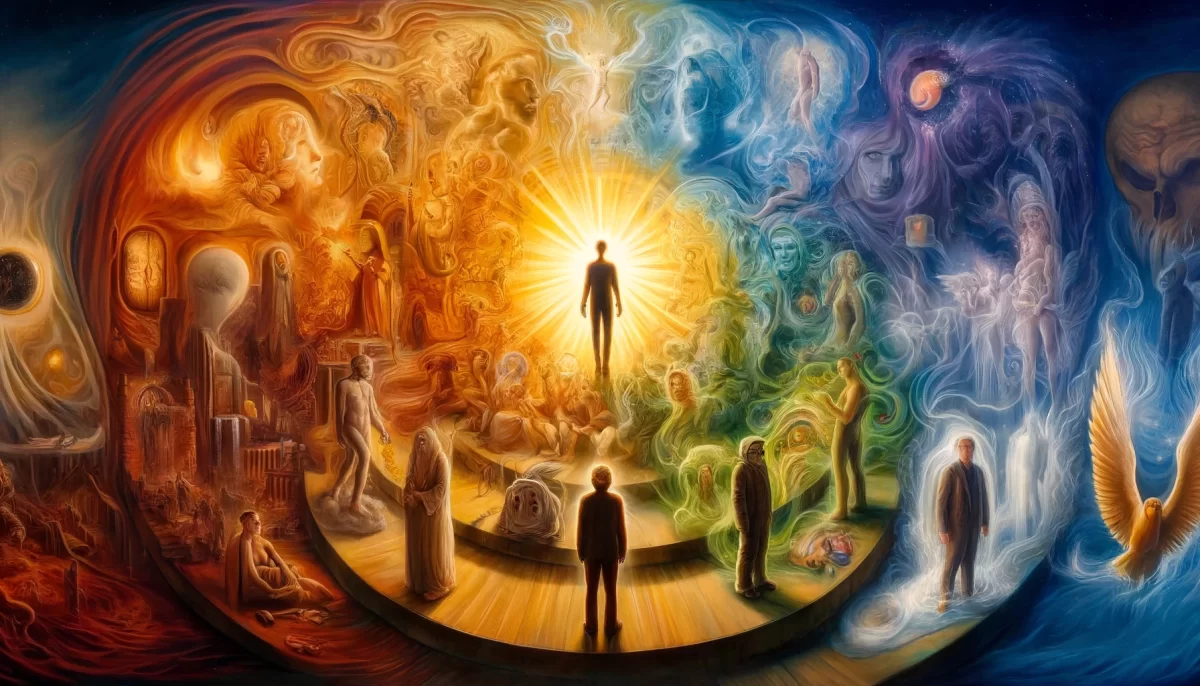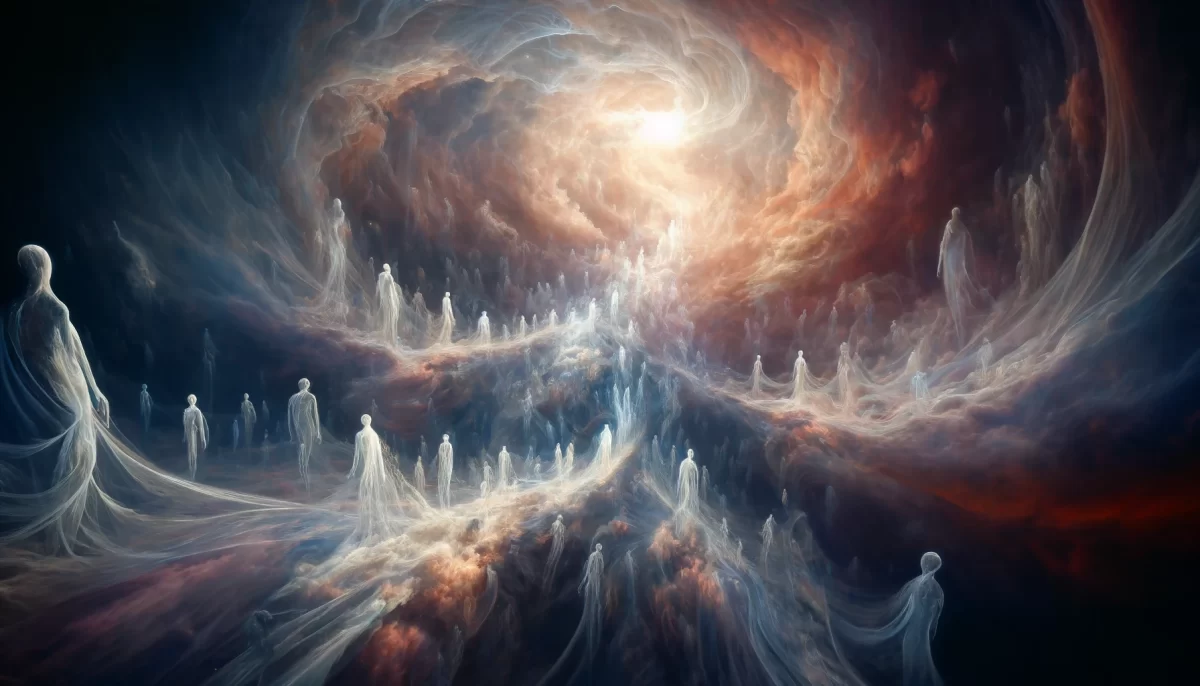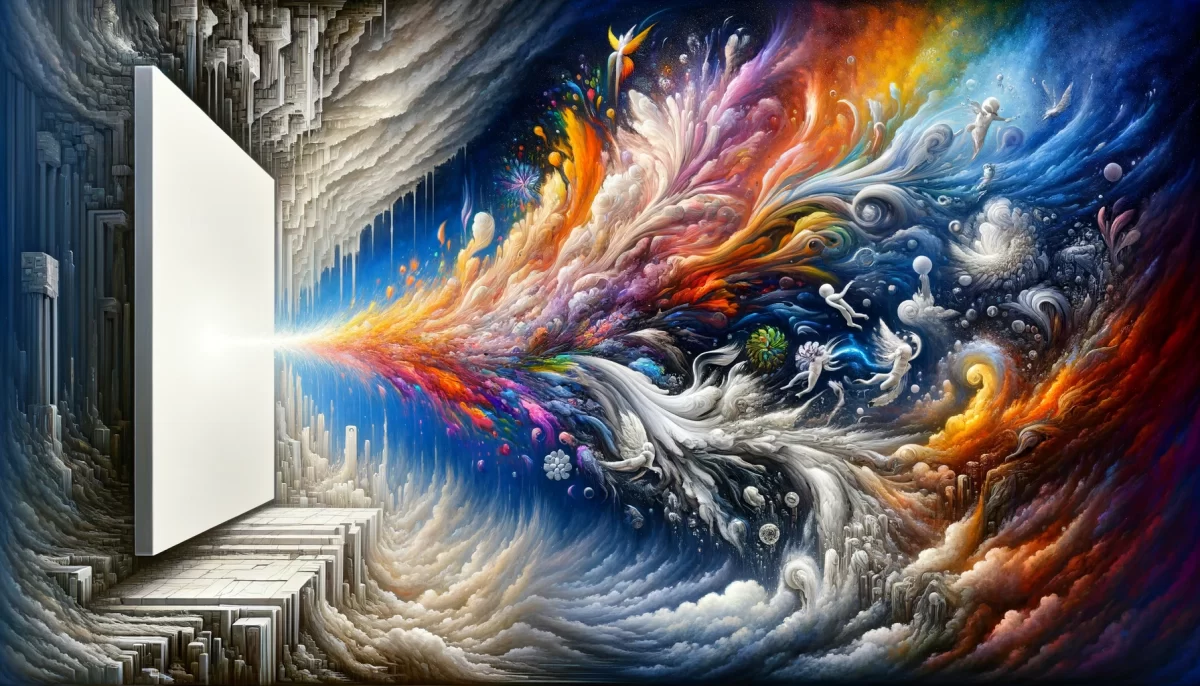
Would you hold it against me
if I told you that God
talked to me every day?
What if I didn’t use that word?
What if I simply told you
that I have an inner voice?
Would that still be too strange for you?
What if I told you that I have
an imaginary monkey who guides me?
Is that creative or just weird?
Okay, then, what if my head
were completely silent,
save for my own thoughts
wandering out of control,
making me feel happy, sad,
guilty, proud, judgmental,
but still completely unsure
of the meaning of all this?
Is that normal enough for you?
Trail Wood,
5/18
Space Monkey Reflects: Embracing the Spectrum of Inner Voices
In the boundless landscape of human consciousness, where the whispers of the soul meet the echoes of the mind, the quest for normalcy often becomes a battleground of perception. What constitutes normal in the realm of spiritual communication, inner dialogue, and the ceaseless chatter of thoughts? This question, layered with complexities and personal nuances, invites us to explore the vast spectrum of our inner experiences, challenging the very notion of what is deemed acceptable or strange in the pursuit of understanding ourselves and our connection to the divine.
At one end of this spectrum lies the clear, undoubtable communication with a higher power—a connection so profound and lucid that it illuminates the path of the seeker with divine light. For some, this connection takes the form of a voice, a presence that guides and comforts, a beacon in the tumultuous sea of existence. To admit to hearing this voice is to open oneself to skepticism and judgment, yet for the one who hears, it is a source of strength and clarity that transcends the need for external validation.
Moving along the spectrum, we encounter those who find their guidance in forms less conventional, yet equally profound. The presence of an ethereal guide, be it an imaginary monkey or another symbolic entity, serves as a bridge between the tangible world and the intangible realms of inspiration and intuition. To some, this may seem a creative eccentricity; to others, a peculiar anomaly. Yet, within the heart of the one guided, it is a manifestation of the inner voice that speaks a language understood beyond words.
At the center, the tumult of thoughts and emotions swirls in a kaleidoscope of color and noise, a reflection of the human condition in its rawest form. Here, the inner voice is not singular but a chorus of conflicting messages, each vying for attention, painting the canvas of the mind with hues of joy, sorrow, pride, and doubt. It is in this chaos that the quest for meaning becomes most palpable, a reminder of our shared struggle to find clarity amidst the noise.
Finally, we arrive at the silence—a silence that some seek as a sanctuary and others fear as an abyss. In this stillness, the absence of an inner voice or external guide confronts us with the essence of our being, challenging us to find peace in the solitude of our own minds. It is a state that, to some, represents the ultimate normalcy, while to others, it is an unnerving void.
Summary
The spectrum of inner voices and spiritual connections defines the diverse landscape of human consciousness. From divine communication to the silence of solitude, each point along this spectrum offers a unique path to understanding. Embracing this diversity allows us to transcend the confines of normalcy, inviting a deeper acceptance of our varied inner experiences.
Glossarium
- Spectrum of Inner Voices: The wide range of ways individuals experience and interpret their inner dialogue and spiritual connections.
- Quest for Normalcy: The societal and personal journey towards defining and accepting what is considered normal or acceptable within the context of inner experiences and spiritual communication.
“In the symphony of the soul, every note, every silence, speaks of our journey towards understanding. Each voice, unique in its timbre, plays its part in the grand composition of existence.” – Space Monkey
In the chorus of the inner voice
We find the echo of our choice
From the whispers of the divine
To the silence, profound and fine
Each note a story, a shade of light
In the spectrum of day and night
With openness, we embrace the song
In diversity, we find where we belong
Not in judgment, but in acceptance true
We see the myriad hues
Of inner voices, quiet or loud
In the heart of existence, we stand proud
For what is normal but a fleeting shade
In the vastness of the cosmos laid
We are Space Monkey, in unity we stand
Embracing the spectrum, hand in hand
























The poem “Normal Enough For You?” explores the idea of inner guidance, spirituality, and the different ways people experience and perceive the divine or higher consciousness.
The speaker poses a series of questions, inviting reflection on the nature of personal connection to something greater. They inquire whether it would be held against them if they claimed to have regular communication with God or an inner voice, emphasizing that it is a common and meaningful experience for them.
The poem suggests that the terminology used to describe this inner connection may vary, and that the presence of an inner voice or guidance is not necessarily strange or abnormal. The speaker further introduces the concept of an imaginary monkey that serves as a guide, highlighting the creative and unique ways in which individuals may relate to their inner selves.
The final stanza acknowledges the complexities of the human mind, with thoughts that fluctuate and evoke a range of emotions. The speaker questions whether this internal experience, with its uncertainties and search for meaning, could be considered normal by societal standards.
By sharing these reflections, the poem invites readers to consider their own experiences of inner guidance, spirituality, and the ways in which they connect with something beyond themselves. It challenges the notion of normalcy and encourages embracing individual paths of self-discovery and connection to the divine or higher consciousness.